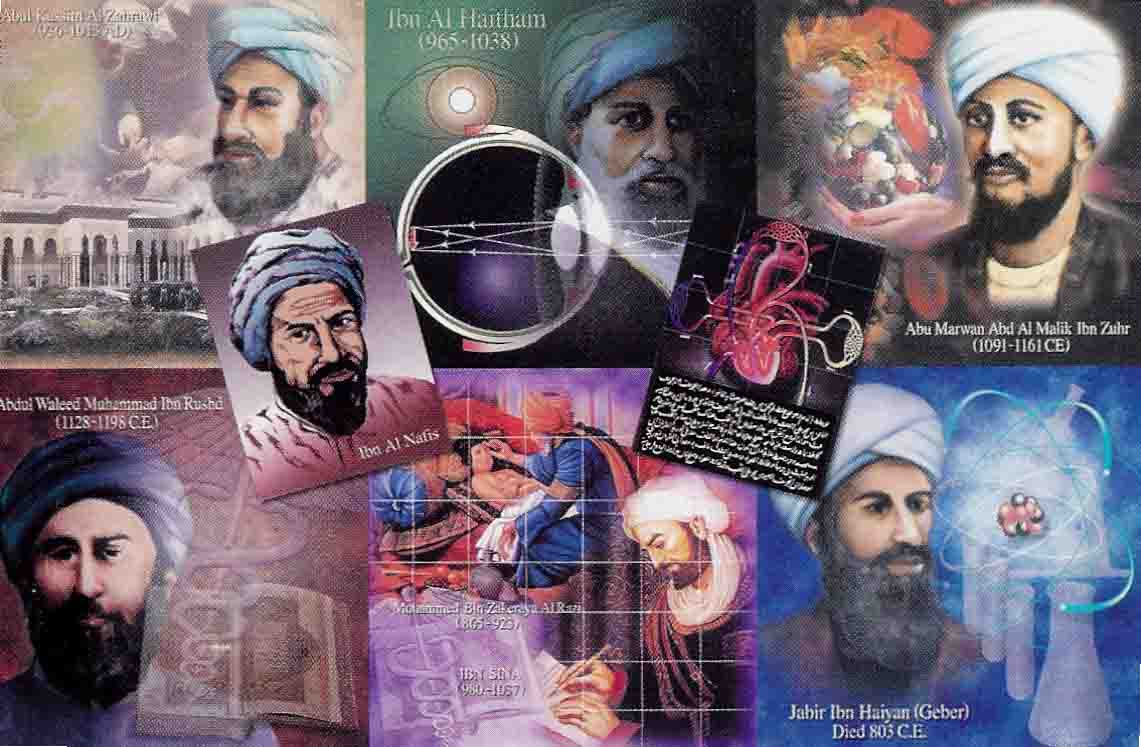ABUL HASAN ALI AL-MASU'DI
(DIED 957 A.D.)
Abul Hasan Ali Ibn Husain Ibn Ali Al-Masu'di was a descen- dant of Abdallah
Ibn Masu'd, a companion of the Holy Prophet (peace be upon him). An expert
geographer, a physicist and historian, Masu'di was born in the last decade of
the 9th century A.D., his exact date of birth being unknown. He was a Mutazilite
Arab, who explored distant lands and died at Cairo, in 957 A.D.
He travelled to Fars in 915 A.D. and, after staying for one year in Istikhar,
he proceeded via Baghdad to India, where he visited Multan and Mansoora before
returning to Fars. From there he travelled to Kirman and then again to India.
Mansoora in those days was a city of great renown and was the capital of the
Muslim state of Sind. Around it, there were many settlements/townships of new
converts to Islam. In 918 A.D., Masu'di travelled to Gujrat, where more than
10,000 Arab Muslims had settled in the sea-port of Chamoor. He also travelled to
Deccan, Ceylon, Indo-China and China, and proceeded via Madagascar, Zanjibar and
Oman to Basra.
At Basra he completed his book Muruj-al-Thahab, in which he has
described in a most absorbing manner his experience of various countries,
peoples and climates. He gives accounts of his personal contacts with the Jews,
Iranians, Indians and Christians. From Basra he moved to Syria and from there to
Cairo, where he wrote his second extensive book Muruj al-Zaman in thirty
volumes. In this book he has described in detail the geography and history of
the countries that he had visited. His first book was completed in 947 A.D. He
also prepared a supplement, called Kitab al-Ausat, in which he has
compiled historical events chronologically. In 957 A.D., the year of his death,
he completed his last book Kitab al-Tanbih wa al-Ishraf, in which he has
given a summary of his earlier book as well as an errata.
Masu'di is referred to as the Herodotus and Pliny of the Arabs. By presenting
a critical account of historical events, he initiated a change in the art of
historical writing, introducing the elements of analysis, reflection and
criticism, which was later on further improved by Ibn Khaldun. In
particular, in al-Tanbeeh he makes a systematic study of history against
a perspective of geography, sociology, anthropology and ecology. Masu'di had a
deep insight into the causes of rise and fall of nations.
With his scientific and analytical approach he has given an account of the
causes of the earthquake of 955 A.D., as well as the discussions of the water of
the Red Sea and other problems in the earth sciences. He is the first author to
make mention of windmills, which were invented by the Muslims of Sijistan.
Masu'di also made important contributions to music and other fields of
science. In his book Muruj al-Thahab he provides important information on
early Arab music as well as music of other countries.
His book Muruj al-Thahab wa al-Ma'adin al-Jawahir (Meadows of Gold and
Mines of Precious Stones) has been held as 'remarkable' because of the
'catholicity of its author, who neglected no source of information and of his
truly scientific curiosity'. As mentioned above, it was followed by his treatise
Muruj al-Zaman. In addition to writing a supplement Kitab
al-Ausat, he completed Kitab al-Tanbih wa al-Ishraf towards the end
of his career. It is, however, unfortunate that, out of his 34 books as
mentioned by himself in Al-Tanbih, only three have survived, in addition
to Al-Tanbih itself.
Some doubts have been expressed about some claims related to his extensive
travelling e.g., upto China and Madagascar, but the correct situation cannot be
assessed due to the loss of his several books. Whatever he has recorded was with
a scientific approach and constituted an important contribution to geography,
history and earth sciences. It is interesting to note that he was one of the
early scientists who propounded several aspects of evolution viz., from minerals
to plant, plant to animal and animal to man. His researches and views
extensively influenced the sciences of historiography, geography and earth
sciences for several countries.
|
|















